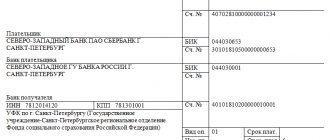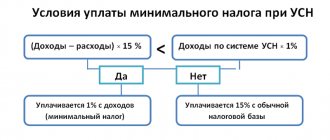An individual may carry out independent commercial activities after state registration. The procedure is of a notification nature, and no time limits are established by law. Opening an individual entrepreneur at the end of the year does not contradict the rules for registration. However, such a decision gives rise to some responsibilities. Assigning status several months, weeks or days before the end of the tax period does not give the entrepreneur any benefits. Declarations must be submitted on time, and fixed insurance premiums must be paid in full.
When is the first report submitted after registering an individual entrepreneur?
The deadlines for submitting declarations directly depend on the chosen taxation regime and the availability of employees. The Federal Tax Service and funds are constantly changing forms and reporting forms - you need to constantly be aware of all updates, since a declaration in an outdated format will not be accepted.
If an individual entrepreneur plans to hire employees under an employment contract or a civil contract, it is necessary to register with the Social Insurance Fund as an employer. After registration, regardless of the tax regime, you are required to provide income reports for all your employees.
- The first reporting is SZV-M, a mandatory monthly report on employed workers, the deadline for submission is until the 15th of the next month + SZV-Experience - reporting reflecting the insurance experience of employees is submitted annually before March 1 to the Pension Fund of the Russian Federation.
- SZV-TD - information about the labor activity of employees, submitted every month to the Pension Fund of the Russian Federation, before the 15th day of the month following the reporting month.
- 4-FSS contains data on accruals for insurance premiums for “injuries”. The FSS accepts the report quarterly until the 20th in paper format and until the 25th in electronic format.
- DAM - the entrepreneur submits calculations for insurance premiums to the Federal Tax Service quarterly by the 30th day following the reporting period.
- 6-NDFL contains information about the accrued wages of employees in general. The report is submitted quarterly, before the last day of the month following the reporting quarter. 2-NDFL - an annual certificate indicating the employee’s earnings with a breakdown for each month. At the end of the year, reports are submitted by March 1, 2021 to the Federal Tax Service.
Reports to Rosstat - if included in the sample
Sometimes Rosstat conducts studies of individual entrepreneurs and LLCs, which may require statistical information about your business. In this case, an official letter will be sent to your address with a form attached and instructions for filling it out. The letter may get lost, so it’s better to play it safe and check your TIN on the Rosstat website.
Don’t be alarmed, you don’t have to remember all these taxes, reports and deadlines. Elba will create your personal tax calendar and remind you of all important deadlines in advance - sign up and try it yourself.
What reports to submit if the individual entrepreneur opened at the end of the year
If you opened an individual entrepreneur at the end of the year between December 1 and December 31, the reporting period begins from the date of registration with the tax office until December 31 of the following year. Under the simplified tax system, the tax period will end on December 31 of the next year.
For example, if registration as an individual entrepreneur took place on December 15, 2019, the annual report must be provided at the end of 2020.
For UTII, reports must be submitted by January 20 of the following year, unless the individual entrepreneur was registered more than 10 days before the end of December.
We recommend reading: What kind of reporting does an individual entrepreneur submit to the tax office and funds in 2021: types, rules, dates and deadlines.
How much should you pay to the budget if there is no activity?
Payments of individual entrepreneurs in the absence of activity are divided into two groups: insurance premiums for themselves and taxes in accordance with the chosen taxation system.
Contributions for yourself
If you have opened an individual entrepreneur and do not conduct any business, then you will not have income from the business. But this circumstance does not affect the fact that annually, no later than December 31, you need to transfer insurance premiums for yourself in a fixed amount. Specific figures are established by Article 430 of the Tax Code of the Russian Federation:
- for 2021 – 40,874 rubles;
- for 2022 – 43,211 rubles;
- for 2023 – 45,842 rubles.
The main part of these payments will be taken into account when calculating the entrepreneur’s insurance pension, i.e. These are not taxes, but certain investments for the future.
At the same time, the Tax Code of the Russian Federation has established grace periods during which insurance premiums are not charged in the absence of activity, but only in the presence of the following circumstances:
- parental leave for up to one and a half years;
- caring for an elderly person over 80 years old, a disabled person of group 1, a disabled child;
- military conscription service, etc.
If you know that you will find yourself in such a situation, send a statement in the prescribed form to your inspectorate in advance. Then the accrual of contributions will temporarily stop.
Another opportunity not to pay insurance premiums for oneself appeared for individual entrepreneurs quite recently. If, after registration, you switch to paying tax on professional income, then contributions can be paid on a voluntary basis.
However, some individual entrepreneurs see the obligation to pay contributions for themselves not as disadvantages, but as advantages. After all, when transferring these payments, the official insurance period for the future pension is formed. And if a person is not officially employed anywhere, then he can open an individual entrepreneur and not work specifically to form this length of service. Whether it is worth doing this is up to you, but the law does not prohibit it.
Taxes according to the selected regime
Do I have to pay taxes if I opened an individual entrepreneur but did not work? The answer to this question depends on which taxation system the entrepreneur chose after registration.
In the OSNO, simplified taxation system, unified agricultural tax and non-public income tax regimes, the obligation to pay taxes arises when there is taxable income. If the individual entrepreneur does not work and does not receive income, then taxes will not be required from such a business.
But if an entrepreneur has applied for a patent after registration, then he will have to pay a predetermined amount. The fact is that in this regime, it is not real income that is taxed, but potential income. Specific amounts are indicated in regional regulations governing the use of PSN on their territory.
Let's say you own a truck. You have decided to open an individual entrepreneur and make money from cargo transportation. Using the PSN calculator, we learned that the cost of a patent for the full year 2021 in the city of Stavropol is 60,000 rubles (the city is taken as an example, the tax in your locality will be different). We applied for and received a patent for cargo transportation.
But then everything went wrong - there were no clients for transportation right away, and there was no time to do business yet. However, the Federal Tax Service will not accept these excuses, but will demand payment for the cost of the patent. True, in this particular example, the calculated tax of an individual entrepreneur without employees will be significantly reduced due to insurance premiums for himself, which still must be paid.
Moreover, given that the potential annual income for this type of activity in Stavropol is 1 million rubles, you will have to transfer not only a fixed amount of 40,874 rubles, but also an additional contribution - 1% of the amount over 300,000 rubles of annual income. And it doesn’t matter that you didn’t receive real income, because on PSN the additional contribution is calculated from potential income. That is, the total amount of contributions in this example will be 47,874 rubles, and they can be completely deducted from the cost of the patent. In total, 47,874 rubles in contributions must be paid to the budget, plus 12,126 rubles for the patent.
In principle, a long-term patent can be abandoned early by filing an application on Form 26.5-4. Then you won’t have to pay for days of inactivity. However, in this case, it will be possible to obtain a new patent when resuming business only next year.
Thus, if you are not sure that you will start working immediately after registering an individual entrepreneur, you need to understand whether it is worth applying for PSN. And 1C:BO specialists will help you figure this out during a free consultation.
Free tax consultation
IP on OSNO
An individual entrepreneur who has not submitted a notification to the tax office about the transition to a certain regime automatically switches to the OSNO regime. Individual entrepreneurs in the general taxation system are required to report on income received in VAT and 3-NDFL declarations.
VAT declaration
The VAT report is submitted to the Federal Tax Service every quarter. If the registration of an individual entrepreneur occurred less than 10 days before the end of the quarter, the first report should be submitted only at the end of the next quarter.
That is, if an individual entrepreneur opened on December 24, 2021, the report is submitted at the end of the first quarter - until April 25, 2021 inclusive, indicating transactions for December.
If an individual entrepreneur is registered more than 10 days before the end of the quarter, the first report is submitted before January 25.
Declaration 3-NDFL
3-NDFL is due every year until April 30. An entrepreneur who registered an individual entrepreneur at the end of the year transfers personal income tax only at the end of the next year.
What are the consequences of lack of reporting: fines
Neglect of the rules results in monetary penalties. The sanction depends on the violation:
- No declarations. If an entrepreneur has not paid the tax, the fine will be 5% of the final obligation for each day of delay. The recovery should not exceed 30%. Transferring funds significantly mitigates the punishment. The sanction will be 1000 rubles.
- Failure to comply with the method of submitting documents. For violation, the taxpayer faces a fine of 200 rubles.
- Error in charges. Incorrect determination of the calculation basis, which led to an understatement of obligations to the budget, is punishable by a penalty of 20%.
The tax office has the right to suspend operations on the account of an entrepreneur who has not submitted reports.
Declaration for individual entrepreneurs on the simplified tax system
Reporting under the simplified system consists only of a declaration according to the simplified tax system. It is submitted annually, the report for 2021 must be sent by April 30, 2021 inclusive. The declaration is submitted every year, and advance payments are paid quarterly.
We recommend reading: Taxes and reporting of individual entrepreneurs on the simplified tax system 6% + what is considered income and how to work with primary documents.
How to calculate the amount of individual entrepreneur contributions (examples)
Let us give examples of calculating the amount of insurance premiums that entrepreneurs need to pay “for themselves” based on the results of 2021.
Example 1.
Let’s assume that at the end of 2021, the individual entrepreneur received an income of 259,639 rubles. As you can see, this income does not exceed 300,000 rubles. This means that contributions must be paid in the minimum amount: 8,426 rubles. for health insurance and 32,448 rubles. for pension insurance. In total, you need to transfer personal contributions in the amount of 40,874 rubles.
Example 2.
Let's assume that the amount of income of an individual entrepreneur for 2021 was 5,326,800 rubles. Since this is more than 300,000 rubles, insurance premiums will need to be transferred in the following amounts.
Fixed contributions for compulsory health insurance - 8,426 rubles.
Fixed contributions for compulsory pension insurance - RUB 32,448. To this value you must add 1% of the amount of income exceeding 300,000 rubles. The excess amount is RUB 5,026,800. (RUB 5,326,800 – RUB 300,000). The amount of additional pension contributions will be 50,268 rubles. (RUB 5,026,800 × 1%).
The total amount of pension contributions will be equal to RUB 82,716. (RUB 32,448 + RUB 50,268), which does not exceed the maximum value (RUB 259,584). Accordingly, at the end of 2021, the individual entrepreneur must transfer “for himself” 91,142 rubles, of which 8,426 rubles. - for compulsory medical insurance, and 82,716 rubles. - on OPS.
Example 3.
Let's assume that the entrepreneur's income for 2021 was 29,396,300 rubles. We will calculate the amount of contributions you need to pay.
Fixed contributions for compulsory health insurance - 8,426 rubles.
Fixed contributions for compulsory pension insurance - RUB 32,448. To this value you must add 1% of the amount of income exceeding 300,000 rubles. The excess amount is RUB 29,096,300. (RUB 29,396,300 – RUB 300,000). The amount of additional pension contributions is 290,963 rubles. (RUB 29,096,300 × 1%).
The total amount of contributions for compulsory pension insurance is 323,411 rubles. (RUB 32,448 + RUB 290,963), which is higher than the maximum value (RUB 259,584). This means that only 259,584 rubles are due for payment. Accordingly, at the end of 2021, the individual entrepreneur will pay “for himself” 268,010 rubles. insurance premiums, of which 8,426 rubles. - for compulsory medical insurance, and 259,584 rubles. - on OPS.
Calculate contributions “for yourself”, taxes according to the simplified tax system and submit reports via the Internet
VAT declaration
Reporting under the value added tax regime is submitted no later than the 25th day of the month after the quarter. If the individual entrepreneur was registered more than 10 days before the end of the year, the declaration is submitted before January 25, if less than 10 days - before April 25.
An individual entrepreneur may be exempt from filing a VAT return. To do this, a notification is submitted to the Federal Tax Service that the activity is not related to the sale of excisable goods and the amount of proceeds from the sale of goods and provision of services for 3 consecutive months amounted to no more than 2 million rubles.
LLCs maintain accounting and submit accounting reports
You have to take into account information about the organization’s activities and its financial situation. All business transactions are important for accounting: selling goods, purchasing materials from suppliers, providing services to customers, paying salaries to employees. Each operation must be confirmed by a document: an agreement, a deed, an invoice or a payment order.
At the end of the year, all data is summarized into one report called “Accounting Statements”. This report is primarily needed by the tax authorities and Rosstat; it should be submitted every year by March 31.
Accounting is a tricky topic, but Elba will help you handle it without an accountant. Read more details in the article “Accounting without an accountant: what LLC needs to know.”
Features of individual entrepreneur taxation
Individuals registered as individual entrepreneurs, as well as legal entities, for tax purposes are guided by the provisions of the Tax Code of the Russian Federation and choose for themselves one of the existing taxation systems. At the same time, individual entrepreneurs never pay taxes, the application of which is the prerogative of legal entities:
- income tax;
- taxes and fees under a production sharing agreement;
- gambling tax;
- corporate property tax.
In the tax system used by individual entrepreneurs, the functions of income tax are performed by personal income tax, and taxes on property, transport and land are paid by individual entrepreneurs as an individual.
A complete list of taxes and payments that are related to activities carried out directly by the individual entrepreneur himself can be divided into four groups:
- mandatory for payment unconditionally (insurance premiums intended for the Pension Fund of the Russian Federation and the Compulsory Medical Insurance Fund);
- mandatory for payment if there is an object of taxation (real estate, land, transport, excise taxes, mineral extraction tax, water, use of wildlife, trade tax);
- mandatory for payment depending on the chosen taxation system (personal income tax, VAT, simplified tax system, UTII, PSN, Unified Agricultural Tax);
About the differences in the most commonly used taxation systems, read the article “Types of taxation systems: simplified tax system, UTII or OSNO” .
- voluntary (insurance contributions to the Social Insurance Fund).
If an individual entrepreneur hires workers, then as an employer he is obliged to pay personal income tax and insurance payments intended for extra-budgetary funds (PFR, MHIF, Social Insurance Fund) from their wages.
Tax payment deadlines for individual entrepreneurs operating in industries affected by coronavirus
For individual entrepreneurs working in the industries most affected by the coronavirus, the deadlines for paying taxes and fees have been extended. The victims include individual entrepreneurs who, as of March 1, 2020:
- have the main OKVED included in the list of the most affected;
- included in the register of small (medium) businesses.
The payment deadline for such taxpayers has been shifted by 6 months for taxes and fees for 2021 and for the 1st quarter and by 4 months for payments for the 2nd quarter.
ConsultantPlus experts provided a ready-made solution indicating the final deadlines for paying taxes and individual entrepreneur contributions:
If you don't have access to the system, get a free trial online.







